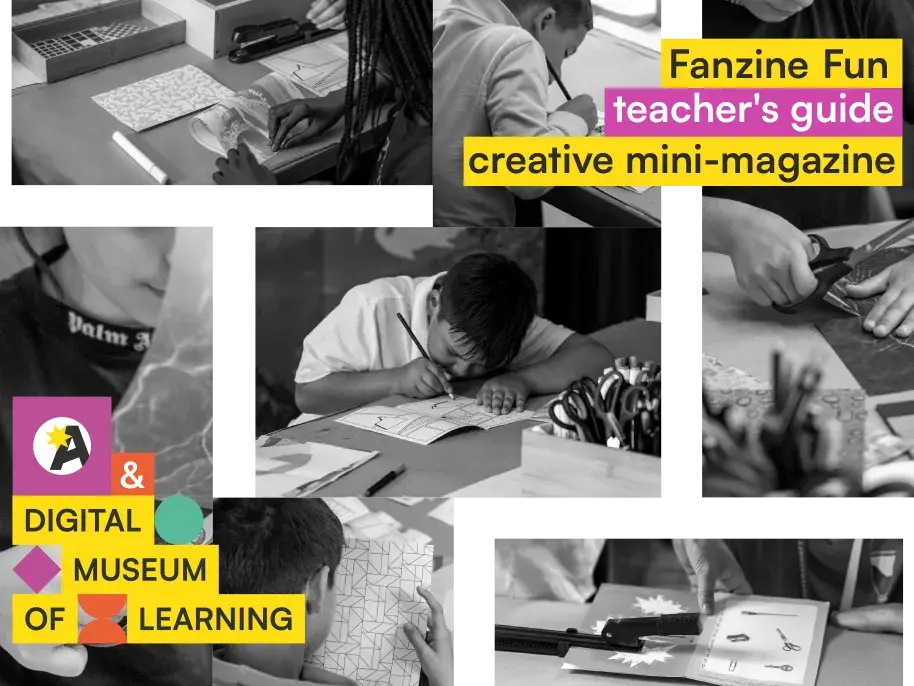New learning resource: Create a FanZine mini-magazine
Educators, get ready to inspire curiosity, creativity, and meaningful learning through art with the new FanZine Fun learning resources.

Environmental FanZine fun
Our new learning activities were developed in collaboration with ARTIZIP as part of the Digital Museum of Learning‘s educational resources. They build on the art mediation program developed for school workshops at the Johann Jacobs Museum, which accompanied the exhibition "Making the Environment Matter".
A FanZine is a creative mini-magazine designed to enhance learning through art and creativity.
The new learning resources invite students aged 7 to 12 years and their educators to engage in hands-on and reflective learning in relation to four of our exhibition stories, covering topics from water pollution to sustainable travelling:
Rachel Carson's fight for the environment: How media reported about the Silent Spring
London Monster Soup: discover the monsters in the polluted Thames water
Marine life made of glass: meet Blaschka’s intriguing models of the sea dragons and blue buttons
Sightseeing with Élisée Reclus: travel the world and discover the perfect globe
Creative activities actively engage students, encouraging deeper understanding and retention of information. The process of designing and creating stimulates critical thinking, as students organize, analyze, and connect ideas on their learning journey. By making something personal and unique, learners form a stronger bond with the material, boosting motivation and ownership.
During our onsite workshops, children from the Zürich region created beautiful examples of FanZines!
The guide integrates creative activities with digital learning, providing a dynamic way to engage students in artistic exploration, critical thinking, and visual storytelling.

Four core pillars of FanZine Fun
Creative & Visual Thinking: Encourage students to give their thoughts shape, lines, and colors. This pillar focuses on using drawing and visual thinking to gather, organize, and contextualize information in a fun and creative way.
Observation: Help students see more and observe like artists. By focusing on details, noticing patterns, and asking meaningful questions, students cultivate inquiry and critical thinking.
Imagination: Fuel students' imagination and explore new possibilities. Imaginative thinking helps your students break barriers, approach challenges with curiosity, and discover innovative solutions.
Expression: Encourage students to reflect on their learning, connect it to their personal thoughts, and express their unique viewpoints. This process fosters deeper understanding, personal expression, and collaborative engagement.
Benefits of integrating arts into education
Research supports the value of integrating arts into education. Studies show that drawing helps with memory retention by allowing students to visualize concepts and connect them to emotions, making them easier to recall later. Drawing can also have cognitive and emotional benefits, such as improving focus, reducing stress, and promoting deeper understanding.
About ARTIZIP
ARTIZIP is a creative studio and network of arts and cultural professionals dedicated to initiating art education and mediation programs in collaboration with non-profits and cultural institutions. As a non-profit association, it organizes community arts events and programs that inspire new ways of thinking, foster connections, and encourage cultural participation.

Share your FanZine
Share your FanZine creations on Social Media @dmolearning to inspire fellow teachers and students around the world.